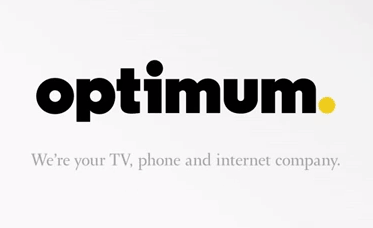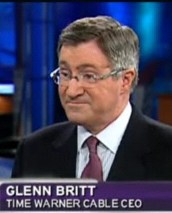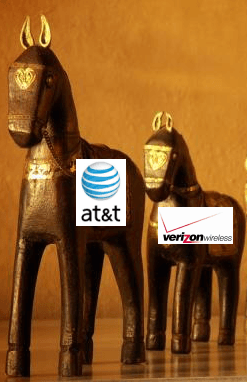
Motivated seller?
Perennially rumored-for-sale Cablevision is getting new pressure to sell its cable systems to the highest bidder, thanks to an increasingly impatient Wall Street hoping to cash in on the next wave of cable consolidation.
Bloomberg News reports “time may be running out” for the suburban New York City cable operator, which has achieved its highest valuation in two years. The $4.8 billion enterprise founded 40 years ago by the Dolan dynasty has always fought to stay independent of larger media companies that have snapped up most of America’s cable landscape, but cracks are forming in the hard-as-concrete resistance to leave the cable business.
Many of America’s still-independent cable systems are watching their values increase as Wall Street speculators predict their days are numbered. Charter Communications, now under the influence of Dr. John Malone, is seen as the primary instigator of cable industry consolidation. Malone advocates fewer than five cable operators in the business, which means companies like Bright House, Cox, Mediacom, Cablevision, and even Time Warner Cable may have to go. Those that want to avoid the Malone consolidation treatment are starting to adopt an “eat or be eaten” mentality, opening the door to potential system acquisition wars in the days ahead.
 Cablevision has tried to avoid being picked off by the likes of neighboring Comcast or Time Warner Cable by trying (and failing) to go private in 2005 and 2007. Cablevision’s service area formerly extended well into western New York — especially in small communities and rural towns, before selling out to Time Warner Cable and retreating to its home base of Long Island, a few New York City boroughs, and parts of Connecticut and New Jersey.
Cablevision has tried to avoid being picked off by the likes of neighboring Comcast or Time Warner Cable by trying (and failing) to go private in 2005 and 2007. Cablevision’s service area formerly extended well into western New York — especially in small communities and rural towns, before selling out to Time Warner Cable and retreating to its home base of Long Island, a few New York City boroughs, and parts of Connecticut and New Jersey.
Regardless of the nostalgia the Dolan family has had in the cable business, shareholders want maximum value for their Cablevision holdings, and that increasingly means selling the operation. Among the likely buyers: a deep-pocketed Time Warner Cable or Charter Communications, the latter willing to take on considerable debt to finance its acquisitions.
“You never say never,” said Cablevision CEO Jim Dolan in response to questions about a possible sale raised during a recent earnings conference call. But Dolan showed no signs of enthusiasm for a sale either.
Most analysts still expect Cablevision to demand a significant premium to sell. Retiring Time Warner Cable CEO Glenn Britt has steadfastly refused to overspend for acquisitions and the company has a history of dropping out of potential deals once prices rise. But Time Warner Cable’s cable properties are adjacent to Cablevision in New York, making a deal a natural fit. Comcast dominates New Jersey.
 Cablevision has recently taken steps that only make a sale more likely, shutting down ancillary businesses like Newsday Westchester, OMGFAST! — a start-up wireless broadband provider in Florida, and selling off Clearview Cinemas, AMC Networks, and reducing holdings in sports programming.
Cablevision has recently taken steps that only make a sale more likely, shutting down ancillary businesses like Newsday Westchester, OMGFAST! — a start-up wireless broadband provider in Florida, and selling off Clearview Cinemas, AMC Networks, and reducing holdings in sports programming.
The biggest downside to a Cablevision buyout remains dealing with Verizon FiOS, which competes in most of Cablevision’s territory. The superior fiber network has forced Cablevision to spend on network infrastructure upgrades and cut prices, yet it is still losing customers to the phone company.
A buyout is unlikely to change much unless a company like Google decides it would like to enter the cable business and build an all-fiber network to compete, for now considered a far-fetched notion by most.
Why the interest in cable consolidation? Malone claims much-larger cable operators can stand toe to toe with programmers during negotiations and get better prices for programming and more leverage to move deals along.
Todd Lowenstein, a Los Angeles-based fund manager at HighMark Capital Management Inc., agrees with that assessment, telling Bloomberg the only ways to combat increasing costs for programming are blackouts or getting bigger.
“We’re at an inflection point,” Lowenstein said in a phone interview with the news service. “We’ve hit the upper limit of consumers’ willingness and ability to pay for cable. To get the upper hand, cable needs to scale up and get bigger — and fast.”


 Subscribe
Subscribe Time Warner Cable admitted this morning extracting more revenue from existing customers was more important than attracting new ones, and long time subscribers responded by canceling service in above average numbers.
Time Warner Cable admitted this morning extracting more revenue from existing customers was more important than attracting new ones, and long time subscribers responded by canceling service in above average numbers.







